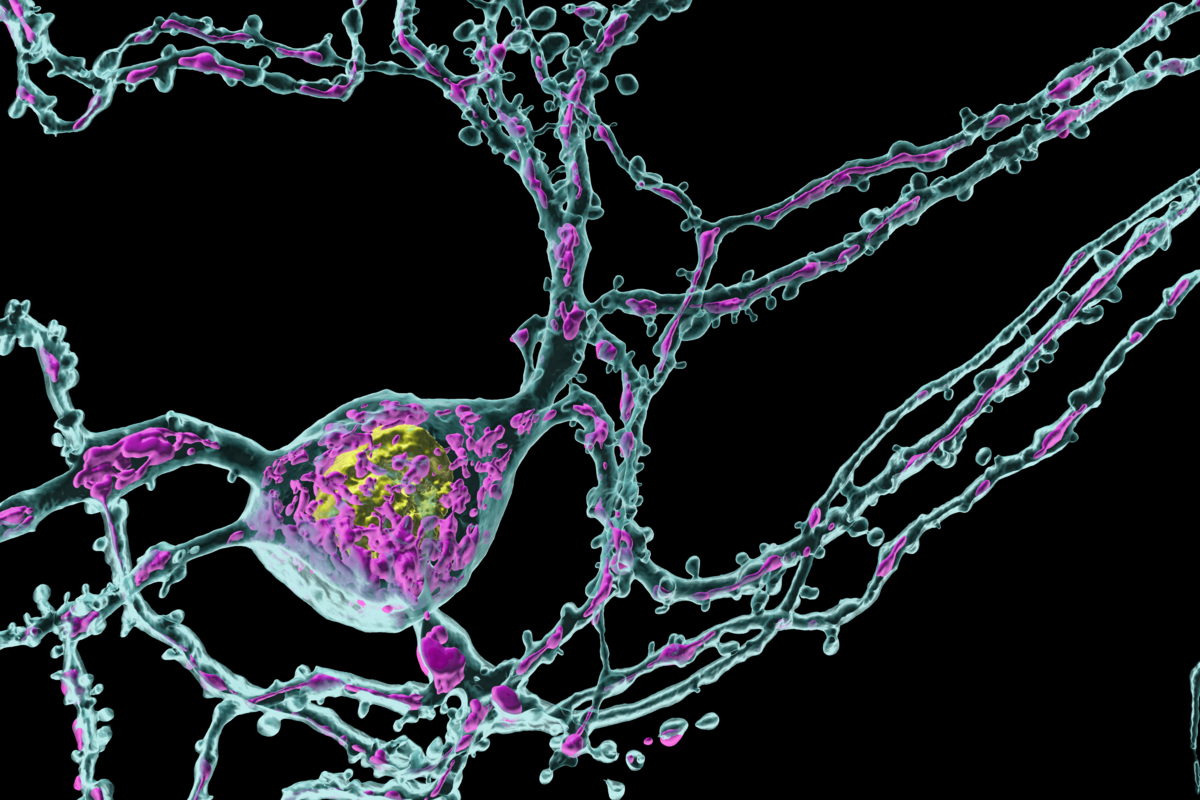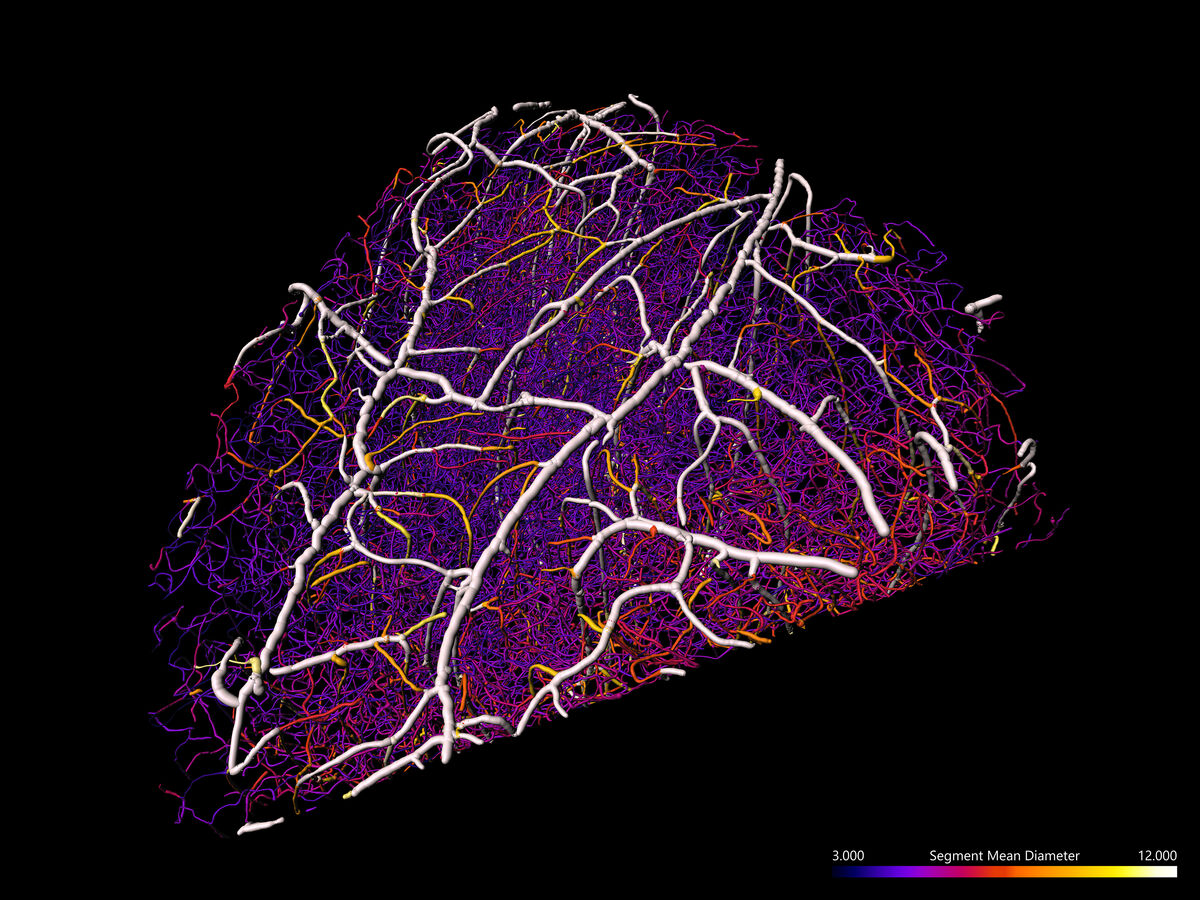Applications
 Part of the Oxford Instruments Group
Part of the Oxford Instruments Group
Expand
Collapse
 Part of the Oxford Instruments Group
Part of the Oxford Instruments Group
Paid image analysis software solutions promise advanced features and a smooth user experience in exchange for their cost. But what specific advantages do they offer compared to open-source alternatives? In this article, we provide a comparative overview of the key features of both paid and open-source image analysis software to help you decide whether investing in paid image analysis software could be a worthwhile addition to your research toolkit.
No time to read? Click here for a short summary
 Analysis of a neuronal cell. Image credit: Aubrianna Decker (Gaublomme Lab) and Daniel Virga (Polleux Lab), Columbia University, NY, USA
Analysis of a neuronal cell. Image credit: Aubrianna Decker (Gaublomme Lab) and Daniel Virga (Polleux Lab), Columbia University, NY, USA
Open-source image analysis software, such as ImageJ, Fiji, QuPath, and CellProfiler, are widely used, cost-free tools for microscopy data visualization and analysis. These platforms are highly flexible and benefit from a collaborative, global community of users and developers who continually expand their functionality. A vast and growing library of plugins supports a range of applications, from basic visualization operations to advanced analysis algorithms and even machine learning-based workflows.
For researchers with programming skills, open-source tools offer the possibility to create highly customized analysis pipelines using programming languages like Python, Java, or R. This flexibility enables tailored solutions for unique research challenges. Additionally, active online forums and communities provide a wealth of resources, allowing users to seek support, share code, and troubleshoot problems collaboratively.
However, the flexibility of open-source tools comes with certain trade-offs. Building custom pipelines often requires significant time and expertise to identify or develop the most appropriate plugins and code. For more complex analyses, researchers may need to combine several different software platforms, leading to a fragmented workflow that involves multiple data transfers. This can make the process time-consuming and prone to errors, particularly if the software lacks built-in features for standardizing or validating results.
Despite these challenges, open-source tools remain an attractive option for researchers who prioritize cost-effectiveness and are comfortable with a hands-on approach. However, for workflows that demand seamless integration, advanced features, or highly efficient processing, paid software may offer a more streamlined and user-friendly alternative.
 Skeletal muscle of transgenic Medaka fish. Sample courtesy of Dr. Joe Sakamoto, Dr. Yasuhiro Kamei, and NBRP Medaka, NIBB, Japan.
Skeletal muscle of transgenic Medaka fish. Sample courtesy of Dr. Joe Sakamoto, Dr. Yasuhiro Kamei, and NBRP Medaka, NIBB, Japan.
Paid software, such as Imaris, provides a comprehensive, integrated platform that supports every step of the image analysis workflow. This includes image pre-processing (e.g., deconvolution and stitching), visualization, object detection, segmentation and quantification, and data interpretation (e.g., plotting, generating snapshots, or creating animations). A standout feature of Imaris is the IMS file format, which ensures efficient data storage and reproducibility by saving both raw data and analysis steps together. This facilitates the reuse of analysis parameters, enabling consistent and reproducible workflows across similar datasets.
A major advantage of paid software is its focus on accessibility and ease of use. Intuitive, user-friendly interfaces reduce the learning curve, allowing researchers of varying expertise levels to perform sophisticated analyses without requiring extensive training. For instance, Imaris employs wizard-guided workflows and avoids excessive technical jargon, making it approachable even for those new to image analysis. The software is optimized for performance, handling tasks such as 3D and 4D visualization, complex object measurements, and processing datasets that may exceed system RAM—sometimes reaching hundreds of gigabytes in size. Additionally, it generates high-quality outputs, including publication-ready images and videos, which are essential for communicating research findings effectively.
Another key benefit of paid solutions is the inclusion of technical support and regular updates, ensuring that users can keep pace with evolving research needs without requiring extensive troubleshooting or maintenance. Imaris’ modular design also allows researchers to start with a basic version and add advanced features over time, tailoring the software to their specific requirements and budget.
Paid software solutions are often well-suited for collaborative environments. For instance, Imaris supports both Windows and macOS operating systems and offers a floating license system, which facilitates shared access across labs or institutions. This makes it a practical choice for research groups that require centralized resources or shared tools.
 Vascular network inside the mouse sensory cortex. Image courtesy of Shany Peled-Hajaj and Pablo Blinder, Tel Aviv University, Israel.
Vascular network inside the mouse sensory cortex. Image courtesy of Shany Peled-Hajaj and Pablo Blinder, Tel Aviv University, Israel.
Open-source and paid image analysis software each have distinct strengths and limitations. Open-source tools offer unparalleled flexibility and are backed by vibrant user communities, making them ideal for researchers who can invest the time and expertise needed to customize their workflows. On the other hand, paid solutions like Imaris provide a streamlined, all-in-one platform with advanced features, technical support, and user-friendly workflows that can save time and enhance efficiency—particularly for researchers working with complex, large-scale datasets. Ultimately, the choice between open-source and paid software will depend on your specific research needs, technical expertise, and available resources.
Human colorectal cancer atlas created from serial sections with Imaris. Video credit: Clarence Yapp Laboratory of Systems Pharmacology, Harvard Medical School, Boston, MA, USA.
Still undecided if investing in paid image analysis software is the right choice for you?
| Open-Source Options | Paid Options (Imaris) |
| Benefits | |
|
|
| Drawbacks | |
|
|
Date: June 2025
Author: Anna Paszulewicz, Dr. Judith Beer
Category: Technical Article

